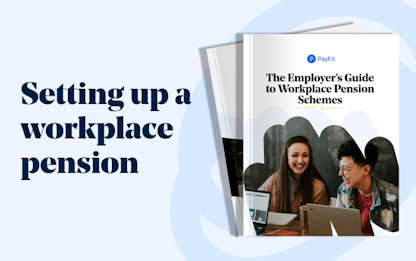- Blog
- |People management
- >Employment law
- >pensions-bill
Pensions (Extension of Automatic Enrolment) Bill - What it Means for Workers and Employers


Both the Pandemic and Cost of Living Crisis have made us all more acutely aware of the value of our money.
Against this backdrop, pensions, in particular, have experienced renewed interest from employers and employees alike. For many UK workers, a pension is still the best way to achieve financial security and stability later in life. In other terms, it forms an integral part of any compensation and benefits package.
But it’s been a while since we’ve seen some real pension reform here in the UK. That is until the Pensions (Extension of Automatic Enrolment) bill received Royal Assent this past month.
While these changes won’t take effect until at least the next tax year (or longer), it’s crucial that employers get up to speed with these, particularly as this will impact the amount they will need to contribute for each employee.
Here’s a quick overview of what the new bill includes.
What is the Pensions (Extension of Automatic Enrolment) Bill?
Introduced in the House of Commons by Jonathan Gullis MP and moved through the House of Lords by Baroness Altmann, this new pension bill will see the age for automatic enrolment of eligible workers lowered from 22 to 18. The lower level limit for qualified earnings will also be removed, meaning contributions will be paid from the first £1 earned, where the scheme uses qualifying earnings (which is most pension schemes).
In combination with the Mansion House Reforms announced in July by Jeremy Hunt, Chancellor of the Exchequer, these changes could see the pension pots of average earners increase by up to 50% over the course of an entire working career. Those on minimum wage could see a rise of up to 85%.
The government’s goal is clear - to empower more of the workforce to save up for retirement and invest in their future financial stability. It will mean that millions more workers across the country are able to save more and earlier, so there’s greater old age security.
How will the new changes work for employees?
Given that contributions will be based on the first pound of earnings instead of on the band above £6,240, employees will be paying an additional £312 a year into their pots based on their 5% contribution. With tax relief, however, this works out to be just over £20 a month more. Add in the employer’s contributions, and this will be boosted to £499 a year.
In addition to this, workers will be saving younger. In fact, the Payroll Centre estimates that by lowering the auto-enrolment age, younger workers will have over £20,000 more in their pension pots once they reach the statutory pension age. Of course, it’s worth taking into account that the retirement age will be at least 68 by the time these workers retire.
And what about employers?
Employers, on the other hand, could end up paying an additional £187.20 per employee in support of these changes. That is, based on the minimum contribution rate. If they pay a higher contribution rate, then this payment increases significantly. And these costs go up if their workforce is primarily young, given that the pension age threshold age will be lowered.
As soon as the changes are implemented, the Department for Work and Pensions plans to consult with employers to discuss the effects of these measures and their timing.
When is the Pensions Bill due to come into effect?
Once a bill has received Royal Assent, it normally takes around a year for that legislation and its regulations to be put into place. In other words, the changes aren’t likely to be set in motion quickly and it will be a little while before employers need to worry about adjusting contributions, etc.
In fact, it’s believed these new changes won’t be implemented, perhaps not until the 2025/26 tax year and will be rolled out on a phased basis. That way, both employers and employees have time to adjust to the increased contributions.
What about Northern Ireland (NI)? Will changes be rolled out there, too?
While these changes currently apply to Great Britain (GB), Northern Ireland is also considering similar changes.
Are there any other considerations?
Alongside increasing contributions, there are gender, elderly and ethnic pension gaps to address. These would require much fuller measures, including those that would take into account that not all employees work on a standard full-time basis -some work part-time, on a contract basis or are taking a career break.
To sum it all up
As we just covered, the Pensions (Extension of Automatic Enrolment) Bill has received Royal Assent and will, therefore, become law over the next tax year. It means employees will be able to start contributing to their pension pot much earlier and benefit from an increase in the amount they contribute. But employers will also need to contribute more as part of this scheme.


The 2024 UK National Living Wage - An Employer ’s Guide

The Cost Of Recruitment In The UK - What You Might Not Know

UK National Insurance Changes for January 2024

End Of Tax Year 2023/2024 - Eight Key Changes For 24/25

Strategies to Reduce Employee Turnover

